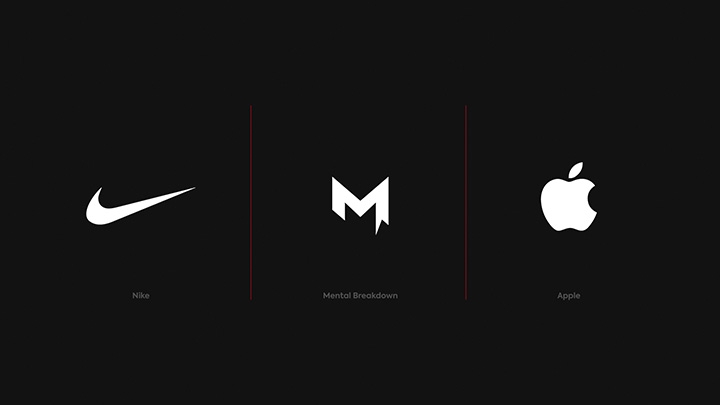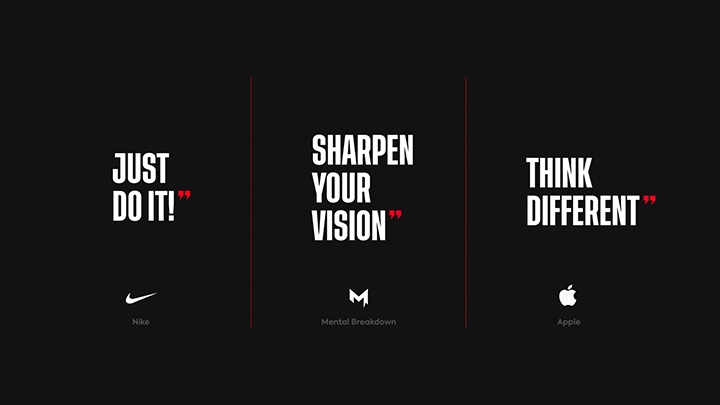Updated on December 25, 2023.
Communication strategy: the brand message
Houston, can you hear me? How was your landing on the branding planet?
Good? Great, because we're getting down to business 🚀
Communication is the foundation of relationships between individuals. This is what makes us all human. So you must know how to communicate consistently and intelligently to keep control of your image.
Let's go back to the basics of communication: to communicate a message, you must be at least two (👏).
To communicate a message, you need a sender and a receiver. A person who sends a message and a person who receives it:
Sender: your brand
Receiver: your audience
Obviously, if it were that simple, we wouldn't be writing an entire page on the subject. Sending a message is simple, but sending the right message is much more complicated.
A consumer judges your brand in a split second. That doesn't leave enough room for error.
So you need a consistent, impactful, and meaningful message to reach your audience's heart.
What is a "brand message"?
A message is a compound of information to capture the attention of a given person.
☝️ Your brand message is not just the equivalent of a commercial. We're talking about the depth behind any communication from your brand.
It's the conceptual and emotional part your audience will retain by reading between the lines in every step of their interaction with your brand.
Overall, your brand message must be aligned with your brand strategy (not just that of a given product or service). It must serve as a long-term strategy and touch your audience's emotions.
A brand message is based primarily on your brand's vision, values, mission, and history. It is a streamlined way to express and represent your brand to your audience.
Your brand message creates a quality bond of trust with your audience. It makes them want to listen to you and engage in conversation.
Your brand, therefore, needs to communicate the same general idea, whatever the form of the messaging medium afterward.
Your brand message must therefore convey your:
Vision
Mission
Values
Positioning
Differentiation
Value proposition
Communicate internally
How can you successfully communicate with the outside world if your in-house teams cannot understand your brand?
Your mission, vision, and values must touch your teams and audience. Creating a corporate culture around your branding will allow your people to become the best ambassadors of your brand.
Communicate externally
Subconsciously, humans are always looking to connect with each other. That's why your customers are looking to connect with your brand.
Your message must be simple, impactful, and memorable to create a relationship of trust. It must touch your community at its core.
To succeed in this challenge, your message must be:
Consistent: you must ensure that the substance of your message is the same everywhere, all the time, regardless of the format.
Consistent: For a message to be remembered, it must be repeated. Your message must remain the same after several exposures over different time frames.
Would you trust someone who constantly changes their speech on the same subject? Certainly not!
Make sure you avoid this pitfall with your brand.
In summary: Each of your products/services will have its own communication. However, the advertising message for a given product (or service) will always have your brand message at its core.
Your products/services can be multiple, but the overall feeling should remain the same.
Internal vs. external communication: conclusion
Clearly, your message should be addressed to more than just your customers. Your brand must communicate internally as well as externally.
Internally, it allows you to reassure, federate and channel the strengths of your tribe members. Your message creates movement and excitement within your teams.
Externally, it allows people who don't know your brand to discover what makes it authentic. For those who already know your brand, your message will enable them to become attached to it.
COMMUNICATING YOUR BRAND MESSAGE
As we have seen in the previous chapters, branding and marketing must work harmoniously. Therefore, you must set up communication campaigns based on the complete articulation of your brand.
Communication is the set of techniques and means allowing a brand to present itself to an audience. It is generally used to:
improve its brand image
improve its brand identity
increase its notoriety
increase its visibility to potential customers
show its authenticity
share the truth about the brand and its community
The communication of your brand message must therefore allow you to connect your brand to your audience while using your brand strategy.
But how to communicate your brand message?
The basic rule of communication should be remembered. You should not communicate TO an audience but WITH an audience.
Remember, in the chapter on brand image, we discussed the fact that communication channels and actions have multiplied in recent years. So you have many tools at your disposal to serve your community.
This is both a boon and an infinite risk of making big sh*t 🫢.
Be careful what you communicate, and take your time.
The logo
No need to present it anymore! The logo (i.e., logotype) symbolically represents a brand. This symbol gives confidence.
It is an integral part of your visual identity. It allows you to brand your products and services. Instantly, your community will know that it can trust them.
The logo is essential to recognize your brand on all your communication supports.
It must be legible and identifiable, in other words, remarkable. It will evolve graphically over the years according to the brand's progression.

Copyright : Hyperstonk
⚠️ Think about registering it on the INPI platform to protect it if your company is French. Otherwise, protect it in all countries.
The slogan
A slogan is an impactful and punchy phrase that promotes a brand, an idea, or a product. Generally speaking, a tagline is deliberately short to remain engraved in the minds.
A well-crafted tagline is a crucial element to your brand's success. It will allow your brand to spread its message even more powerfully.

Copyright : Hyperstonk
The sound signature
A sound signature is the audible equivalent of a logo.
It is a sound composition that allows a brand to be recognized on audiovisual media (videos, radio, events, podcasts). It enables the creation of an emotional link with the audience. A sound signature helps to recall feelings or memories (who doesn't remember the sweet sound of the PlayStation 1 or the "Startup Chime" of a MacBook 🥰).
These notes sometimes go hand in hand with a slogan to help with recollection. There's no need to introduce you to those in the Carglass jingle.
Instead, we'll illustrate the point with the sound signature of Intel, the very first brand to use this helpful marketing technique, in 1994.
The tone of voice
The tone of voice is how your brand communicates its message.
This tone is supposed to be unique. It gives a personality to your brand. Its goal is to humanize the relationship between you and your audience.
It should allow you to consistently address all current (and future) communication.
Your audience must feel connected when you speak to them. They must feel the right feeling about you.
Succeed in expressing yourself by touching the emotions of your target, and you will always win.
A great recent example to illustrate this is Netflix.
Netflix uses a humorous and intimate tone when speaking to its audience. And it does so in 100% of its interactions (advertising, app notifications, social networks).
Netflix has created a sense of community by playing the role of a close friend to the platform user.
The community even gave it a nickname: Néné.
Feel free to watch the following video to learn more about Netflix and its brand.
The brand platform
The brand platform is a document that condenses the brand strategy and brand territory.
It clearly describes your brand's mission and vision, and outlines, in a clear and precise manner, your brand's positioning in its market.
It is your brand's manifesto.
A brand platform is an alignment document. It includes all the elements that will allow you to convey your message with emotion to your audience (slogan, vision, mission, USP...).
All these elements will make your brand feel tangible. You will then be able to reach your audience in the heart. You will see them transform into a robust community.
Communicating your brand message: conslusion
In summary, a complete strategy to convey your brand message will allow your community members (internal or external) to become true ambassadors of your brand.
Throughout your journey, remember that you are trying to reach human beings and their emotions.
A well-implemented strategy will open the doors to the best information channel between human beings: word-of-mouth (WOM).
Since word of mouth is the most critical lever in a purchasing decision, we recommend that you focus on it when building your brand. Your brand message will then circulate between your ambassadors and the uninitiated, to your advantage and without any intervention on your part.
Ain't life sweet? 🤘
Combine emotions and brand message
We've just seen the theory. Communicating a message is much more complex because humans are emotional beings.
But then, how to combine feeling and brand message? 😎
We hope you've enjoyed this chapter.
We took a long time putting this guide together for you.
Our only ask is that you take a quick second to share it with someone you like.
Our mission at Hyperstonk is to help fair, ambitious, and upright people make a mark and build their legend.
And, to make it happen, we need your help. So, it would mean the world to us.